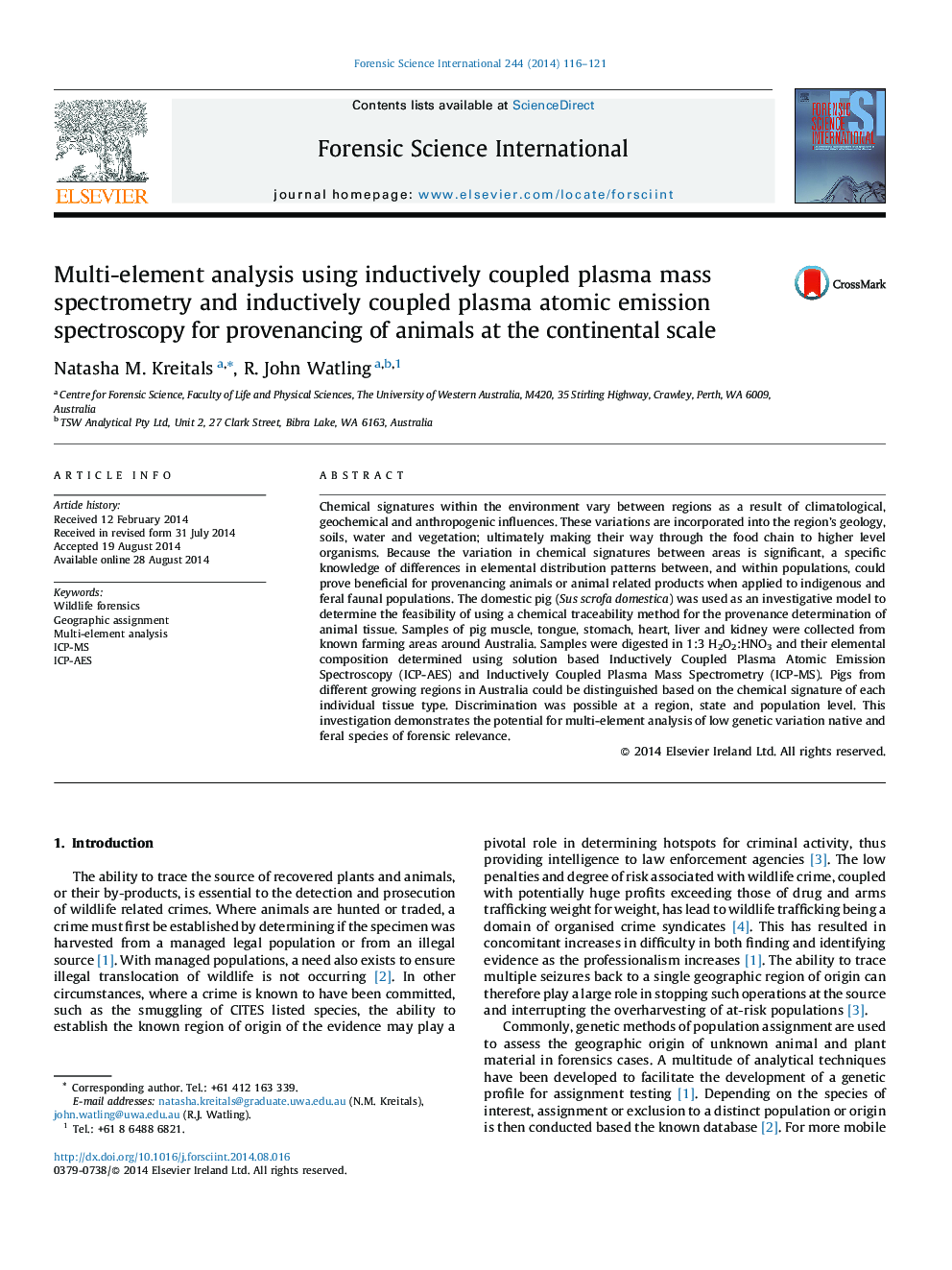| Article ID | Journal | Published Year | Pages | File Type |
|---|---|---|---|---|
| 6552337 | Forensic Science International | 2014 | 6 Pages |
Abstract
Chemical signatures within the environment vary between regions as a result of climatological, geochemical and anthropogenic influences. These variations are incorporated into the region's geology, soils, water and vegetation; ultimately making their way through the food chain to higher level organisms. Because the variation in chemical signatures between areas is significant, a specific knowledge of differences in elemental distribution patterns between, and within populations, could prove beneficial for provenancing animals or animal related products when applied to indigenous and feral faunal populations. The domestic pig (Sus scrofa domestica) was used as an investigative model to determine the feasibility of using a chemical traceability method for the provenance determination of animal tissue. Samples of pig muscle, tongue, stomach, heart, liver and kidney were collected from known farming areas around Australia. Samples were digested in 1:3 H2O2:HNO3 and their elemental composition determined using solution based Inductively Coupled Plasma Atomic Emission Spectroscopy (ICP-AES) and Inductively Coupled Plasma Mass Spectrometry (ICP-MS). Pigs from different growing regions in Australia could be distinguished based on the chemical signature of each individual tissue type. Discrimination was possible at a region, state and population level. This investigation demonstrates the potential for multi-element analysis of low genetic variation native and feral species of forensic relevance.
Related Topics
Physical Sciences and Engineering
Chemistry
Analytical Chemistry
Authors
Natasha M. Kreitals, R. John Watling,
